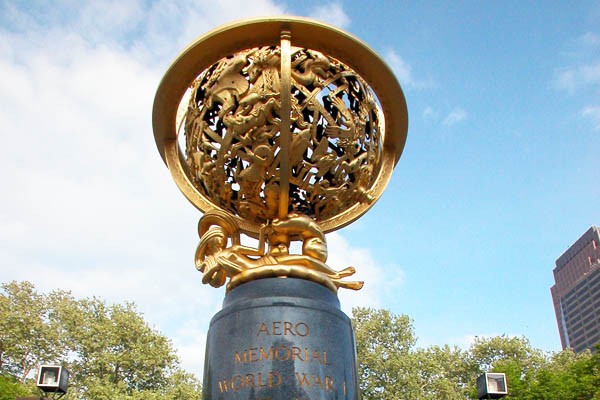Aero Memorial
Introduction
Text-to-speech Audio
To commemorate aviators who died in World War I, sculptor Paul Manship (1885-1966) created the Aero Memorial in 1948. It features a stone pedestal with a bronze celestial sphere on top that contains intricate intertwined forms evoking the signs of the zodiac in the night sky. It is believed the night sky represents the aviators who died in the war. Manship was one of the country's foremost sculptors and was influenced by classical Roman and archaic Greek Art. He received numerous awards for his work around the world. One of his most well-known works is the Prometheus sculpture in Rockefeller Center in New York City.
Images
The bronze sphere is opposite the main entrance of the Franklin Institute and is dedicated to the aviators who died in World War I.

Backstory and Context
Text-to-speech Audio
The idea for the memorial originated with the the Aero Club of Pennsylvania, which was founded in 1909 and is one of the country's oldest aviation clubs. In 1917, the club donated funds to the Fairmount Park Art Association, which collected money for the memorial. However, it took until the late 1930s for enough money to be raised. Finally in 1939 that goal was achieved and the association reached out to Manship, whose design was approved in 1944. By then, he had already created several sphere sculptures, including Prometheus and the Woodrow Wilson Memorial at the League of Nations building in Geneva, Switzerland (the building is now known as the Palace of Nations).
Sources
"Aero Memorial." Association for Public Art. Accessed December 13, 2022. https://www.associationforpublicart.org/artwork/aero-memorial.
